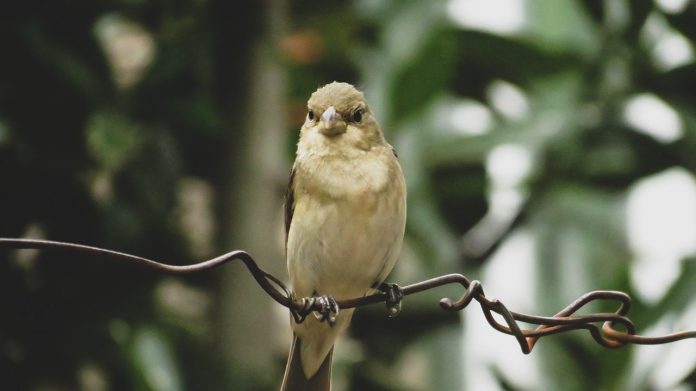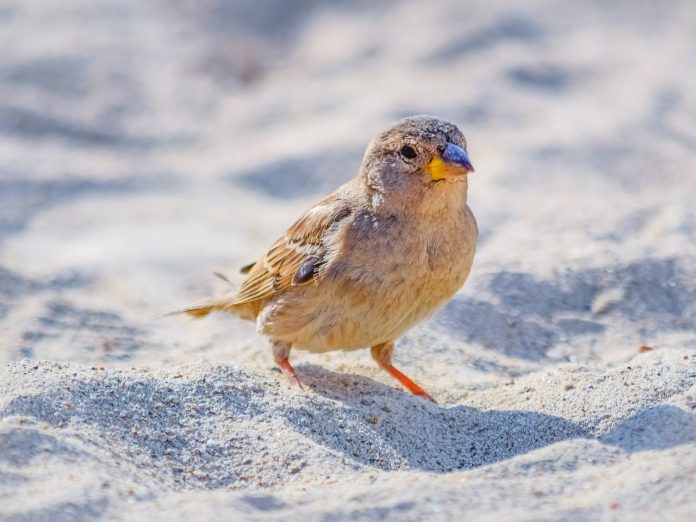Pale Rockfinch is also known as Pale Rock Sparrow and Pale Petronia. This finch is 14 cm in length. The pale rockfinch is a nondescript bird of open hillsides with scattered scrub in the Middle East.
Recalls pale female House Sparrow, but is somewhat smaller with unstreaked upperparts, the sandy gray-brown plumage being relieved only by the double buffish-white wing bars, a whitish panel on secondaries, and indistinguishable whitish supercilium and moustachial stripe, the somewhat paler underparts (including whitish throat), and a darker tail with whitish tips to all but central feathers.

Latter is evident when the tail is viewed from below or when the tail spreads when alighting, appearing as whitish tail corners. Dull plumage renders it easily overlooked, but luckily, the song is very distinctive. Sociable, forming flocks outside the breeding season. Pale rockfinch breeds in sprinkled colonies, nesting in crevices in gullies. A pale rockfinch perches freely on bushes and low crags. A pale rockfinch feeds on the ground.
It is confused most likely with poorly seen Rock Sparrow, which also has pale tips to tail feathers, but later, if seen reasonably well, shows prominent streaking above and below, is thicker, has relatively shorter wings, and has a more wedge-shaped bill (culmen is much more rounded on Pale Rockfinch).
The female Sinai rosefinch lacks pale supercilium and white tail corners and is a relatively smaller-headed, stubbier-billed, buffer bird. Chestnut-shouldered Sparrow has a plainer head, often a black bill, rufous’shoulders’ (frequently hard to see), more prominent whitish wing bars, and no white at the tip of the tail.
The juvenile is browner above and rather buffered below, but the first winter is as an adult. In fresh plumage, pale fringes and tertials may be quite prominent, but these are less obvious in worn birds. Pale rockfinch calls include a sharp ‘twee-ou’ and, in flight, a soft purring trill somewhat reminiscent of European bee-eaters.
Pale rockfinch song is uttered from the bush top or crag, sometimes in flight, is a wheezy trilled ‘tzzz-tzzz-tzzz-tzzztzeeeeeeeeei’, not unlike the terminal portion of the song of Yellowhammer, which has an almost cicada-like quality. Pale rockfinch is no longer thought to be closely related to Rock Sparrow Petronia petronia (and may possibly be more closely related to the Fringillidae than the Passeridae), so now more often than not placed in the monotypic genus Carpospiza.
It is not uncommon for locals to visit arid, stony hillsides, with gullies and sparse bushy cover, and upland grassy plains with rocky outcrops. Migrant and winter flocks occur in cultivation and flat, stony deserts (but winter records for our region are relatively few).







